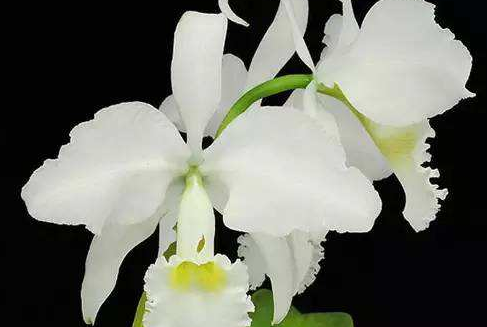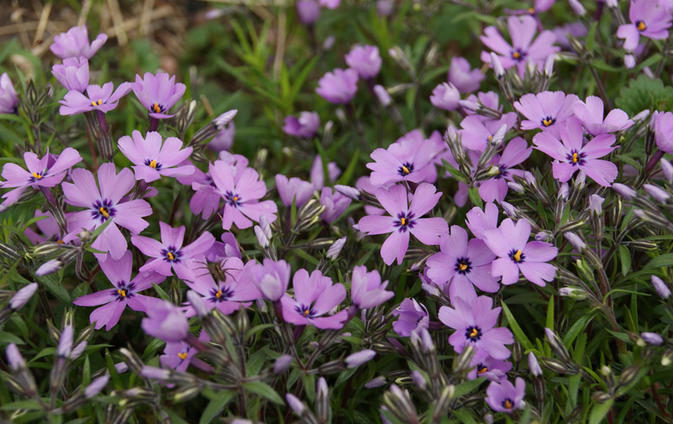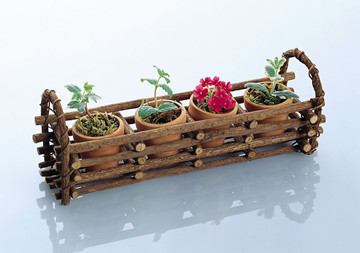Cartland's maintenance method
If Cartland blossoms in time, the easiest way is to choose varieties with different flowering periods. To make it blossom from January to March, you can choose winter flowers and early spring varieties, such as' big eyes', 'foreign port', 'red rose' and so on. If it blossoms from April to May, late spring flower varieties can be selected. Such as' ruby', 'mobile phone', 'dream come true' and so on.
If Cartland blossoms from June to September, summer flower varieties can be selected, such as' Marshal', 'Akifen', and so on. If it blossoms from October to December, autumn and winter flowers can be selected, such as' sapphire', 'yellow diamond', 'Green', 'green virgin' and so on. For the autumn and winter flower Cateran which needs short sunshine, its flowering period can be controlled by shortening or prolonging the sunshine time, so that it can bloom in time. For temperature type varieties, the florescence can be controlled by adjusting the temperature.

two。 Temperature
The suitable temperature for the growth of Cartland is 20-30 ℃, and it is best to grow indoors in winter, the best temperature is above 10 ℃, the plant will not enter dormancy; if the temperature exceeds 35 ℃ in summer, the temperature should be cooled in time, and it can be sprayed with water spray, ventilation and ventilation to keep the growth exuberant.
3. Moisture content
Cartland needs sufficient water during the peak growth period, but not too much watering, especially in winter, when the plant is in a semi-dormant state, it is necessary to control and reduce watering so as not to cause rotting roots. Generally, it can be watered every two or three days in spring, summer and autumn, and once a week in winter.
4. Planting material
Cartland's plant material can be mixed with fern root, moss, bark, perlite, peat soil, coal cinder and so on. It is usually replaced every one or two years, usually when the basin is changed.
The breeding method of Cartland
The breeding method of Cartland
Temperature
The suitable growth temperature of Cartland is 20-30 ℃, then 12-24 ℃ in March next year, 25-30 ℃ in the daytime and 15-20 ℃ in the middle of the night. The daily difference of 5-10 ℃ is the best. In order not to let it enter the semi-dormancy state, the temperature of the greenhouse should reach more than 10 ℃ in winter. If the temperature is below 12 ℃, you need to move it into the room as soon as possible. More than 35 ℃ in summer, it is necessary to create a refreshing environment for it, so that it can maintain a strong growth and avoid stem and leaf rot.
Light
Cartland is suitable for growing in a semi-overcast environment. When the light is too strong, the pseudocorm is easy to burn and induce other diseases. 50-60% of the light should be shaded in seasons other than winter. Winter does not need shading, can be placed in front of the window, a little exposure to the sun.
Moisture content
Cartland has high air humidity. There should be plenty of water in the growing season, but not too much watering, especially in winter, when the plant is in a semi-dormant state, watering should be controlled. Otherwise, it is easy to lead to rotting roots and death.
Planting material
Cartland plants with exuberant growth need to be replaced every 1-2 years, preferably at the beginning of spring buds or after flower fade.
Fertilizer
Cartland needs relatively little fertilizer, which needs to be fully mature. Stop fertilizing when the temperature is above 32 ℃ or below 15 degrees Celsius, and during flowering and dormancy, so as not to damage the rhizome.
Matters needing attention in Cartland Culture
Cultivate Cartland not to change the direction of the flowerpot at will, if you constantly change its line of defense, due to the tendency to light, can cause succulent petiole atrophy, if the leaves are twisted and yellow, it will affect flowering.
Cartland, who is raised by the family, mostly uses the split-plant method to reproduce. Plants with strong growth are usually divided once every three years or so. Its ramet method is basically the same as that of Chinese orchids. Each new plant after ramet needs to have at least three false bulbs, otherwise it will not blossom or blossom very little in 2-3 years.
- Prev

Culture methods and matters needing attention of New Guinea Impatiens
The reproduction of New Guinea impatiens can be divided into three methods: sowing, tissue culture and cutting. Sowing and propagation time-generally in March-April, timely harvest, sowing with picking. The optimum temperature for germination is 22 degrees. The method of tissue culture propagation has been successful and large-scale production has been started. The self-pollination ability of New Guinea impatiens is poor in production.
- Next

Why do flowers often change pots?
Turn the pot, that is, the direction of the flowerpot is often changed during the flower growth. Due to the phototropism of some flowers and plants, if the light is not often adjusted by turning the basin, bad shapes such as partial crowns will appear, affecting the ornamental value. Why do flowers have phototropism? This is due to the effect of auxin in vivo.
Related
- Fuxing push coffee new agricultural production and marketing class: lack of small-scale processing plants
- Jujube rice field leisure farm deep ploughing Yilan for five years to create a space for organic food and play
- Nongyu Farm-A trial of organic papaya for brave women with advanced technology
- Four points for attention in the prevention and control of diseases and insect pests of edible fungi
- How to add nutrient solution to Edible Fungi
- Is there any good way to control edible fungus mites?
- Open Inoculation Technology of Edible Fungi
- Is there any clever way to use fertilizer for edible fungus in winter?
- What agents are used to kill the pathogens of edible fungi in the mushroom shed?
- Rapid drying of Edible Fungi

